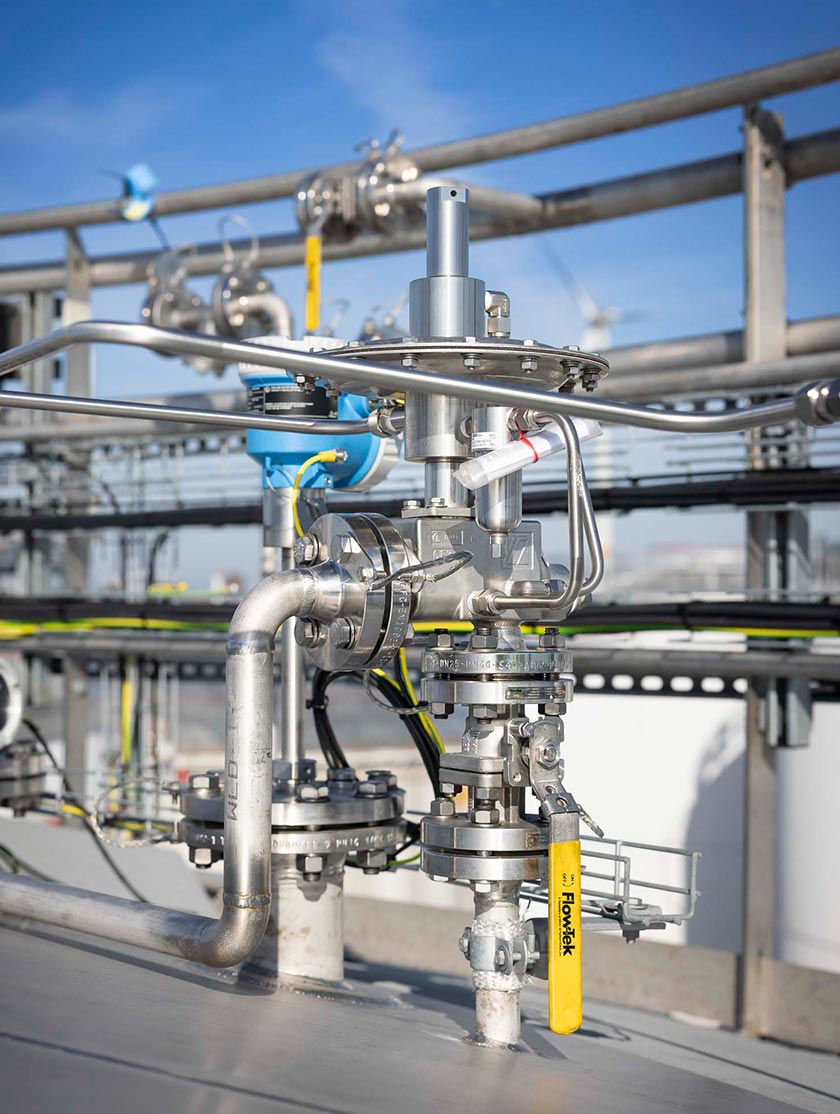Principles and Types of Back Pressure Regulators Explained
How Do Back Pressure Regulators Work?
Back pressure regulators operate on the principle of force balance. These devices maintain consistent inlet pressure by adjusting valve position based on the interaction between mechanical forces—typically springs or diaphragms—and the pressure of the process fluid. When upstream pressure rises above the setpoint, the valve opens to release excess pressure. Once the pressure returns to the desired level, the valve closes to maintain stability. While this basic principle remains consistent across designs, the method of achieving and controlling force balance varies by regulator type. These differences directly influence accuracy, responsiveness, and suitability for specific industrial applications.
To better understand these differences, the following sections outline the main types of back pressure regulators and their unique operating principles.
1. Self-Contained Back Pressure Regulators
Self-contained back pressure regulators are the most straightforward and commonly used type. These regulators act directly on the process fluid without relying on external pilots or power inputs. They function as proportional control valves, adjusting the valve opening in direct response to pressure changes.
Operating Principle: These regulators use a spring and diaphragm (or piston) assembly to balance force. When inlet pressure exceeds the setpoint, the pressure pushes against the diaphragm, compressing the spring and opening the valve. As pressure drops, the spring pushes the diaphragm back into position, closing the valve to maintain the desired pressure level.
Design Variations:
- Spherical: Features a linear flow path through the valve body, well-suited for general-purpose applications.
- Flow Angle Pattern: Redirects flow to minimize erosion and cavitation, improving durability in high-velocity or aggressive service conditions.
Key Features:
- Exhibits "pressure buildup," where inlet pressure rises above the setpoint at higher flow rates due to the proportional nature of the control mechanism.
- Economical and simple to implement, with no need for external instrumentation or control lines.
Ideal Applications:
Best suited for systems with steady flow conditions where moderate pressure variation is acceptable. Commonly used in cost-sensitive applications that do not require tight pressure tolerances.
2. Differential Back Pressure Regulators
Differential back pressure regulators—also referred to as tracking or biasing regulators—are designed to maintain a fixed pressure difference between two points in a system. Unlike self-contained regulators, these devices introduce a reference pressure input that allows more precise pressure control.
Operating Principle:
These regulators maintain differential pressure by balancing inlet pressure, spring force, and a third reference pressure (P3). The valve adjusts automatically to preserve the set pressure difference, regardless of fluctuations in either pressure point.
Example Applications:
Widely used in rotary compressor seal oil systems, where maintaining seal oil pressure slightly above compressed air pressure is essential. This prevents backflow and contamination, protecting the integrity of mechanical seals and extending equipment lifespan.
Benefits:
- Maintains consistent differential pressure to improve system stability and safety.
- Prevents cross-contamination in sensitive systems through precise control.
Key Considerations:
- Requires a stable and reliable reference pressure source.
- Typically used in specialized applications that demand high precision.
3. Pilot-Operated Back Pressure Regulators
Pilot-operated back pressure regulators are engineered for high-precision environments that experience variable flow conditions. These regulators use a two-stage mechanism, with a small pilot valve controlling a larger main valve to enhance responsiveness and minimize pressure deviation.
Operating Principle:
The pilot senses process pressure and modulates the load on the main diaphragm or piston. This allows fine-tuned control and faster response to changing flow or pressure demands, keeping the inlet pressure closer to the desired setpoint.
Benefits:
- Delivers tight setpoint control with minimal pressure rise.
- Performs reliably across a wide range of flow conditions.
Trade-Off:
Greater mechanical complexity and, in some cases, the need for external power or instrumentation.
Ideal Use Cases:
Processes that require stable pressure despite varying system conditions—such as high-flow gas systems, chemical processes, or dynamic industrial operations.
Conclusion
Back pressure regulators provide critical pressure control across a wide range of industrial systems, with each type tailored to specific application needs. Self-contained regulators offer simplicity and cost efficiency for stable environments. Differential regulators maintain precise pressure margins between system points, improving safety and preventing contamination in sensitive applications. Pilot-operated regulators deliver high accuracy and control in dynamic systems where pressure fluctuation is common. Understanding how each type operates—and how they respond to changing conditions—allows engineers and operators to select the most effective solution for maintaining pressure stability and optimizing overall system performance.
New to Back Pressure Regulators? Start with Expert Support |
Optimizing your systems with the right back pressure regulator is crucial for enhanced efficiency and control. Understanding these components is the first step. Explore our full range of back pressure regulators or complete the Regulator Sizing Form to find the perfect back pressure regulator for your specific application needs.
Ever Wonder How Back Pressure Regulators Work? Watch This |
See how a back pressure regulator automatically controls upstream pressure and protects your system using a smart balance of spring tension and diaphragm movement—perfect for keeping your operations running smoothly.





